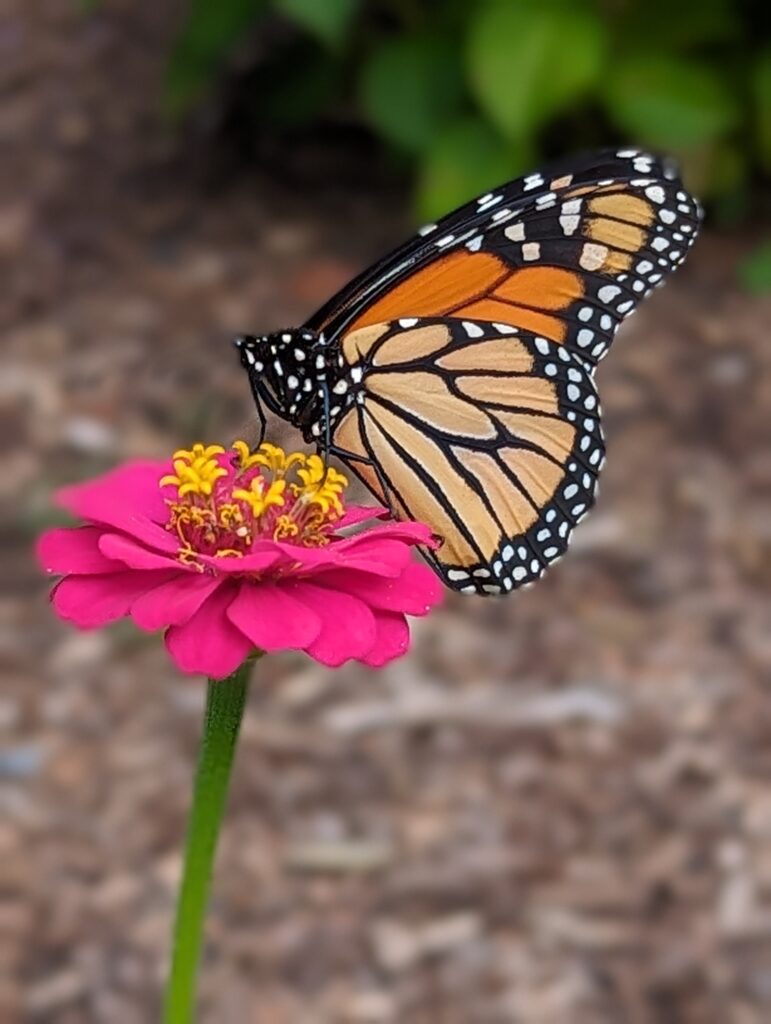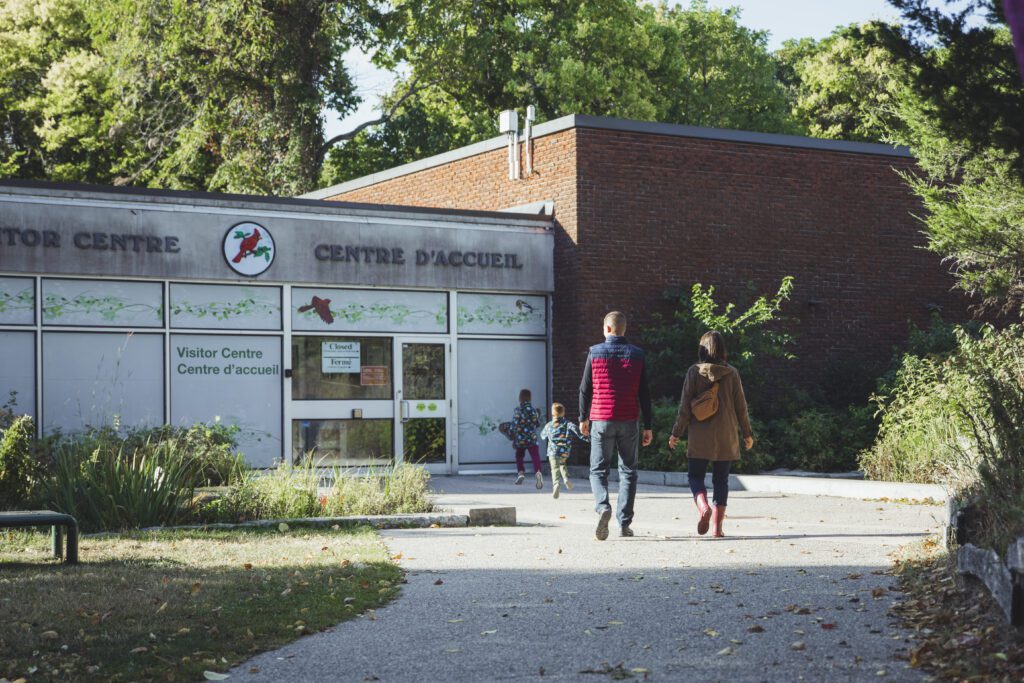The monarch butterfly migration is one of nature’s most extraordinary events, and Point Pelee National Park in Ontario offers a front-row seat to witness it. Every year, millions of monarchs embark on an epic journey from Canada to their overwintering grounds in Mexico, spanning over 4,500 kilometers. Yet, this breathtaking migration is becoming increasingly threatened by the declining monarch populations across North America. The beauty of this natural event is now marked with concern, as the species faces numerous challenges that threaten their survival.
Monarch Butterflies: A Symbol of Resilience
Monarch butterflies are a symbol of transformation, resilience, and beauty. Known for their vibrant orange and black wings, monarchs are not only stunning creatures but also play an essential role in the ecosystem as pollinators. These delicate insects, weighing less than a gram, undertake one of the longest migrations of any insect species, making their journey even more impressive. However, the monarchs’ incredible voyage from the northern regions of North America to the forests of central Mexico is now under threat.
In recent decades, scientists have observed a dramatic decline in monarch populations. Factors such as habitat destruction, climate change, and the use of pesticides have led to the decline of these magnificent butterflies. While the monarch population fluctuates annually, data shows an overall downward trend that has conservationists deeply concerned.

Witnessing the Monarch Migration at Point Pelee National Park
Located on the northern shore of Lake Erie, Point Pelee National Park is one of the best places in Canada to witness the monarch migration. The park is uniquely positioned at the southernmost tip of mainland Canada, creating a natural “funnel” for monarchs as they make their way south toward Mexico. During the migration season, from late August to early October, the skies above Point Pelee become filled with fluttering monarchs, creating an unforgettable experience for visitors.
The park’s lush habitats and abundance of wildflowers provide essential nectar for the migrating monarchs, making it a critical stopover on their long journey. Visitors to the park can explore the various trails, observation points, and the iconic Tip—a sandy point that extends into Lake Erie—to catch a glimpse of monarchs resting before they embark on their trans-lake flight. For more general information on visiting Point Pelee National Park, read our blog post Visit Point Pelee National Park.
While witnessing this incredible migration is a sight to behold, it also serves as a reminder of the monarch’s fragile existence and the urgent need for conservation efforts to protect these butterflies and their habitats.

The Declining Monarch Populations: Understanding the Threats
The monarch butterfly population has been in steady decline for several decades. According to research, the eastern monarch population, which migrates through Point Pelee, has dropped by over 80% in the last 20 years. The western population, which migrates along the Pacific coast, has fared even worse, with a staggering decline of over 90% in the same period.
Several factors contribute to the declining monarch populations:
1. Habitat Loss
The destruction of habitat is one of the primary causes of monarch population decline. Monarch butterflies rely on milkweed plants to lay their eggs, as it is the only food source for their caterpillars. However, widespread urbanization, agricultural expansion, and the use of herbicides have led to the destruction of milkweed habitats across North America. As milkweed disappears, so too does the monarch’s ability to reproduce and sustain its population.
Additionally, deforestation in the monarchs’ wintering grounds in Mexico has severely impacted their survival. The forests in central Mexico provide the necessary conditions for monarchs to survive the winter months, but illegal logging and forest degradation have reduced these vital habitats.
2. Climate Change
Climate change poses a significant threat to monarch populations. Changes in temperature and weather patterns disrupt the butterflies’ migration timing, breeding cycles, and the availability of food sources. Warmer temperatures can cause monarchs to migrate earlier or later than usual, which may result in their arrival at stopover points when nectar and milkweed plants are not abundant. Extreme weather events, such as droughts, storms, and heat waves, can also devastate monarch populations and their habitats.
3. Pesticide Use
The widespread use of pesticides, particularly neonicotinoids, has had a detrimental impact on monarch populations. These chemicals are commonly used in agriculture to control pests but can also harm non-target species like monarchs. Pesticides can kill monarch caterpillars directly or reduce the availability of milkweed and nectar plants, further limiting the monarchs’ ability to thrive.
4. Lack of Awareness and Conservation Efforts
While there are several organizations working to protect monarch butterflies, public awareness of their decline and the need for conservation efforts is still limited. Many people are unaware of the monarch’s crucial role in the ecosystem and the threats they face. As a result, more comprehensive education and conservation initiatives are needed to ensure the survival of this species.
Efforts to Conserve Monarch Butterflies
Despite the challenges, there is hope for the future of monarch butterflies. Numerous organizations and initiatives are dedicated to preserving monarch populations and their habitats.
Monarch Watch, a nonprofit organization, is one of the leading efforts in monarch conservation. The group focuses on research, education, and habitat restoration to protect monarch butterflies. Monarch Watch encourages individuals and communities to participate in conservation efforts by planting milkweed and other nectar-rich plants in their gardens to provide essential habitats for monarchs. These “monarch waystations” are critical stopover points for migrating butterflies, offering them a place to rest, refuel, and lay eggs.
In addition to local efforts, international cooperation is essential for monarch conservation. The United States, Canada, and Mexico have all committed to protecting monarch habitats, particularly in the monarchs’ wintering grounds in Mexico. Through reforestation programs and protected areas, governments and organizations are working to safeguard the forests that monarchs rely on for survival.
At Point Pelee National Park, visitors can learn about ongoing conservation efforts and how they can help protect monarch butterflies. Educational programs, guided tours, and interactive exhibits are available to raise awareness about the monarch’s migration and the importance of preserving their habitats.

How You Can Help
There are several ways you can contribute to monarch conservation efforts:
- Plant Milkweed: One of the most effective ways to help monarch butterflies is by planting milkweed in your garden. Milkweed is the only plant that monarchs lay their eggs on and is essential for their caterpillars to feed. By planting native milkweed species, you can provide critical habitat for monarchs and support their population growth.
- Create a Pollinator-Friendly Garden: In addition to milkweed, planting nectar-rich flowers such as goldenrods, asters, and coneflowers can provide essential food sources for migrating monarchs. These plants offer monarchs the energy they need to continue their long journey south.
- Reduce Pesticide Use: Limiting or eliminating the use of pesticides in your garden can help protect monarch butterflies and other pollinators. Pesticides can be harmful to monarchs and their habitats, so using organic or eco-friendly alternatives can make a difference.
- Support Conservation Organizations: Donating to or volunteering with organizations like Monarch Watch can help fund research, habitat restoration, and educational programs aimed at protecting monarch butterflies.
- Spread Awareness: Educating others about the decline of monarch populations and the importance of conservation efforts is crucial for raising awareness and inspiring action. Share information with friends, family, and your community to help protect these iconic butterflies.
Preserving the Monarch Migration for Future Generations
The declining monarch populations are a pressing concern, but through collective efforts, there is hope for preserving this remarkable species. Point Pelee National Park offers a unique opportunity to witness the monarch migration and learn about the critical role monarchs play in the ecosystem on their Monarch Hikes hosted Thursday- Sunday at 6:30 pm. You can follow the migration updates at Point Pelee National Park on Facebook. By supporting conservation efforts and taking action to protect monarch habitats, we can ensure that future generations will continue to experience the beauty of the monarch migration.
For more information on how you can get involved in monarch conservation, visit Monarch Watch. Dream BNB Hospitality invites you to experience the magic of the monarch migration at Point Pelee while staying in one of our nearby vacation homes, offering you both comfort and proximity to this incredible natural event. Together, we can create awareness of the declining monarch populations and help protect the monarchs and their journey across North America.






